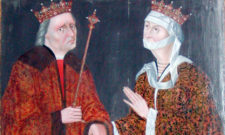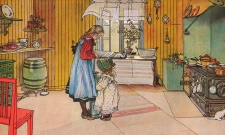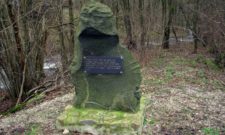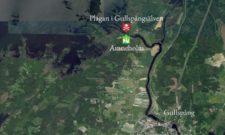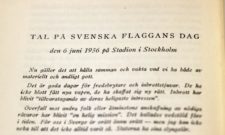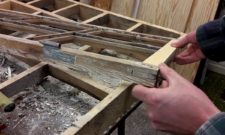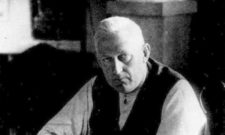Shop our historical maps
Culture
Albertus Pictor - our foremost medieval artist
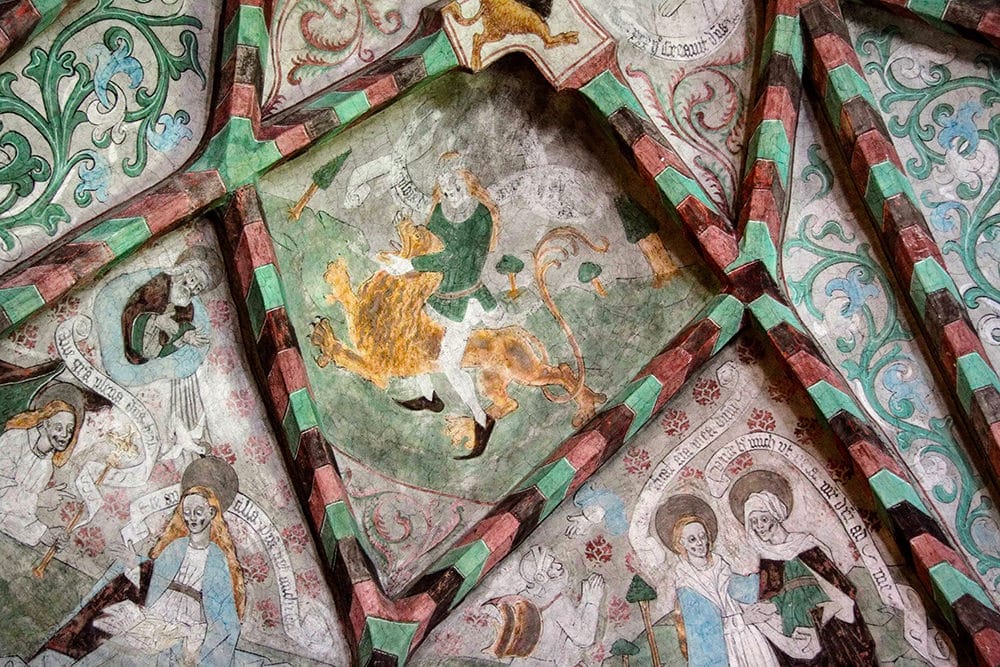
Feb
One of the 15th-century artists who left the strongest legacy in Sweden is Albertus Pictor (Albrekt Painter), who decorated more than 30 churches, mainly in Uppland, Västmanland and Södermanland. His art is best experienced in the six churches where the pictures have never been painted over: Härkeberga, Härnevi, Odensala, Täby, Floda and Kumla kyrkby.
The 15th century can be said to be the era of mural painting in Sweden. All over the country, church walls and vaults were decorated with numerous and often colourful pictures with motifs from both the Bible and everyday life of the common people. Later on, the Reformation led to a change in church ideals in a more pared-down direction, so that in many cases the works of art were renovated away. In the 18th century, medieval paintings also began to be perceived as vulgar, which led to many of them being whitewashed. In some churches, however, we can still see the wealth of medieval imagery today, either because the paintings have been left alone or because they have been freed from obscuring layers of plaster.
One of the 15th century artists who left the strongest legacy is Albertus Pictor (Albrekt Målare), who decorated more than 30 churches, mainly in Uppland, Västmanland and Södermanland. The fact that several of them have escaped being the victims of calcification testifies to the fact that his distinctive style was appreciated and considered worthy of protection. Today we have reason to be grateful for this. Pictor's extremely rich pictorial world is a fantastic source of knowledge about living conditions in medieval Sweden, while the churches he decorated are outstanding sights.
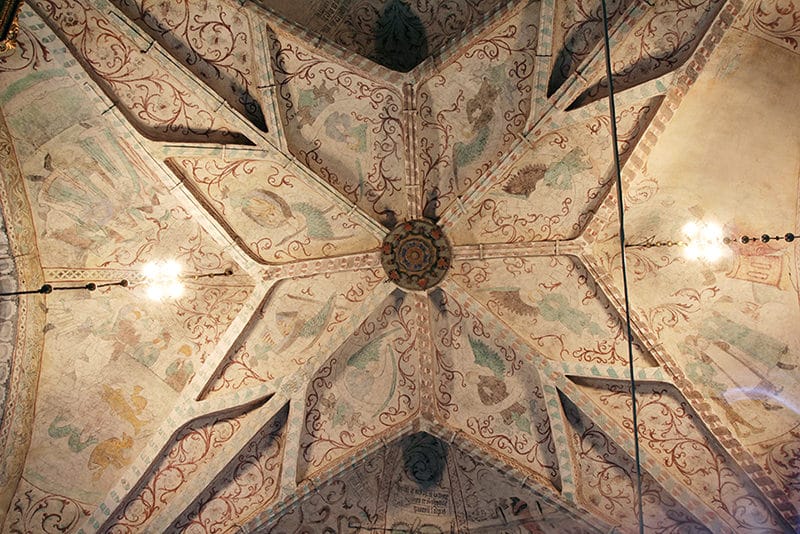
Little is known about Albertus Pictor's background, but he was probably born in the 1440s. There are many indications that he came to Sweden from Germany as a young adult. In some churches he has left the signature "Albertus Ymmenhausen", which suggests that he had his roots in one of the German communities called Immenhausen in the Middle Ages. This could explain his particular style, with a liveliness and use of colour that was unusual in the Nordic countries at the time. Perhaps he had been apprenticed somewhere on the continent before moving north for some reason.
Pictor seems to have first lived in Arboga, where he was registered as a citizen in 1465. He is first mentioned in the Stockholm land register in 1473, when he marries "Johan målare's widow" and allows her children to receive their paternal inheritance. Perhaps the marriage was a way of taking over a position as master painter in the city, while at the same time securing the widow's livelihood. The wife brought with her a house at Norreport, which became the couple's home.
Between 1479 and 1508, Pictor is mentioned on ten occasions in Stockholm's thought books. He is sometimes called a "painter", sometimes a "bead-embroiderer", which means that his art practice included both church painting and bead-embroidery. There is also a note that he played the organ at a funeral mass in Storkyrkan. He thus appears to have been a man of many talents. In 1507, when he must have been nearly 70 years old, he is described as 'lying on his bed' from illness, so that he had to be represented by his wife in a dispute. In 1509 his name is marked with a line in the Stockholm City Scale Book, which is probably to be interpreted as his death. His wife Anna, however, survives in written sources until 1522.
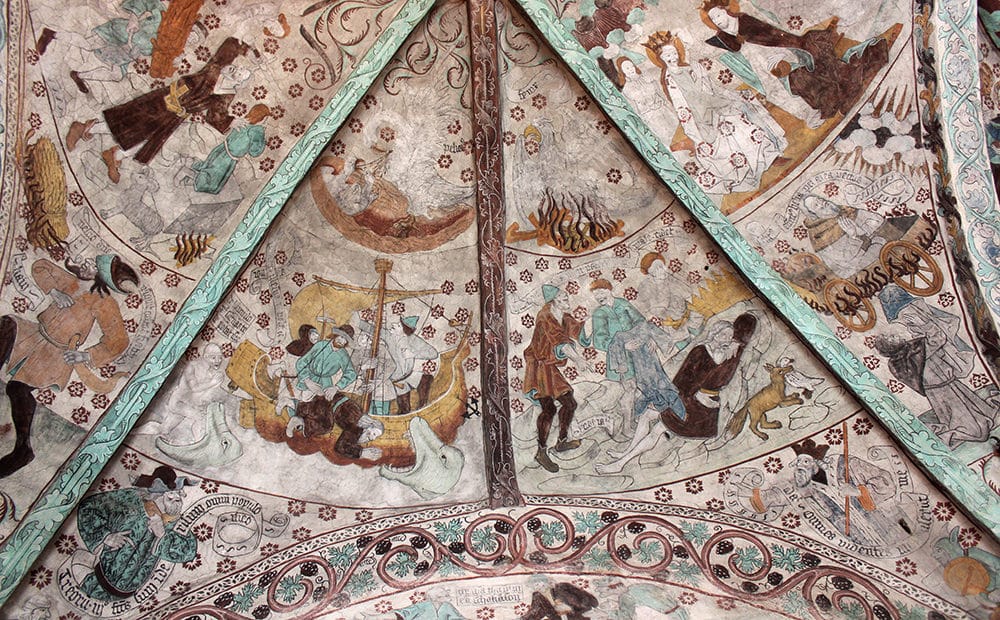
Pictor's style and technique differ considerably from what was customary in Swedish churches during his lifetime. Often glazes are layered on top of each other to create depth. The level of detail is also unusual. Clothing folds, locks of hair shift in different shades, and people are depicted in mid-natural movement. Facial features are varied and expressive in a way rarely seen in Scandinavian art of this period.
What has made Pictor famous and appreciated, however, is not only his distinctive expression, but also his expansiveness. Many of the churches have been furnished with an astonishing profusion of images. No space has been left empty; the space between the pictures is filled with stenciled ornaments, while the picture fields are delimited by borders. Perhaps the prime example of this immoderation is Härkeberga Church, where the walls and ceiling are completely teeming with figures.
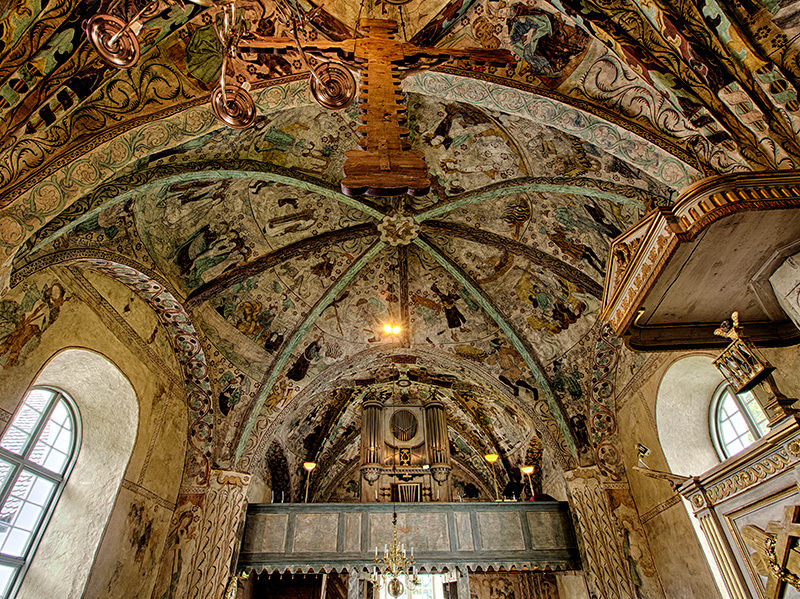
Pictor seems to have used the Biblia Pauperum (Bible of the Poor) for his help, as some of his motifs resemble the book's illustrations. However, it is clear that the artist and his apprentices sometimes had difficulty in rendering the unfamiliar settings. Painting a whale fish or a camel is perhaps not so easy if you have no more than vague ideas of what they look like, and in some cases it is clear that the artists have fantasised freely. The clothes and features of the people are more typical of Swedish farming society than of the people of the Bible, and strange imaginary animals prowl the corners.
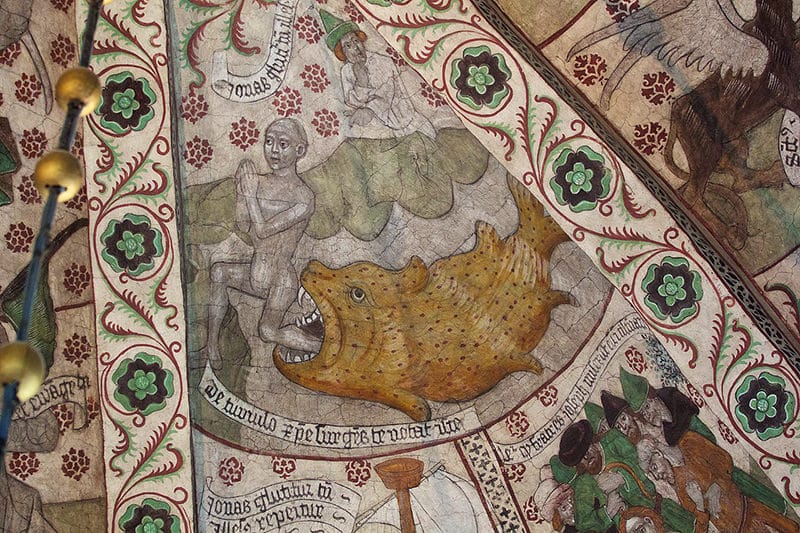
Another of Pictor's most famous churches is in Täby. Here, too, the interior is studded with figures, but the most famous is the depiction of a man playing chess with death. "I play you mate" has been written above the image and we can see the man clutching his chest in horror as he realises the game is lost. Death, on the other hand, grins with satisfaction. As a child, filmmaker Ingmar Bergman saw this painting and was so taken by it that later in life he used it as inspiration for the film The Seventh Seal.
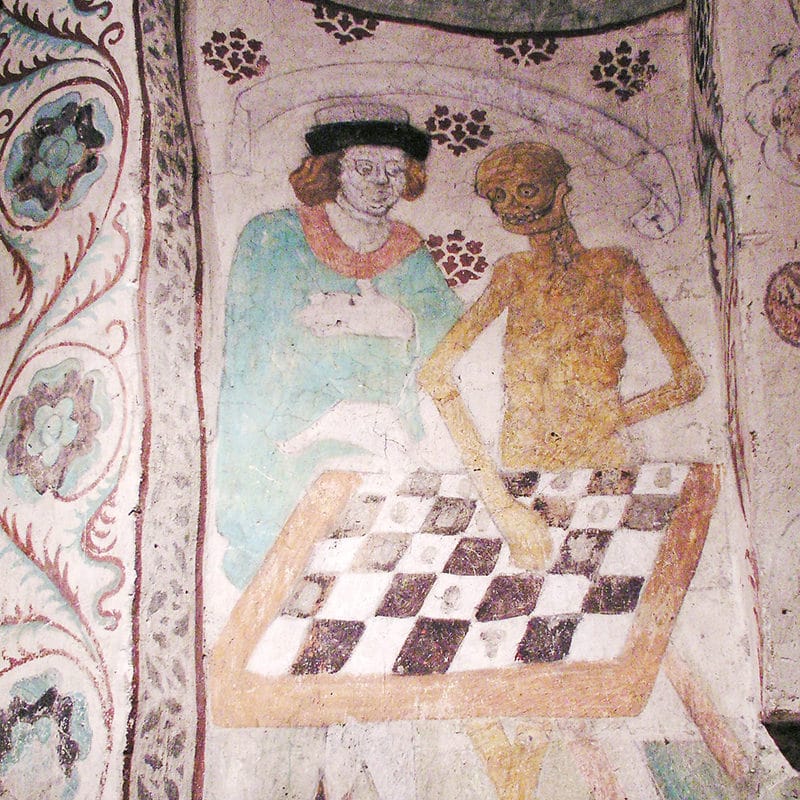
Pictor devised a particular pattern for the distribution of motifs, which he repeated in several churches. The New Testament images run along the walls of the nave, while scenes from the Old Testament are depicted in the vaulted ceilings. In the nave there are images with moralising messages and more profane imagery. There are frequent warnings about gambling, drunkenness and sorcery. The viewer sees people playing medieval musical instruments, while the world of thought of the time becomes clear in motifs taken from folklore. In Härkeberga Church, for example, a milk hare is seen vomiting up stolen milk in a vessel.
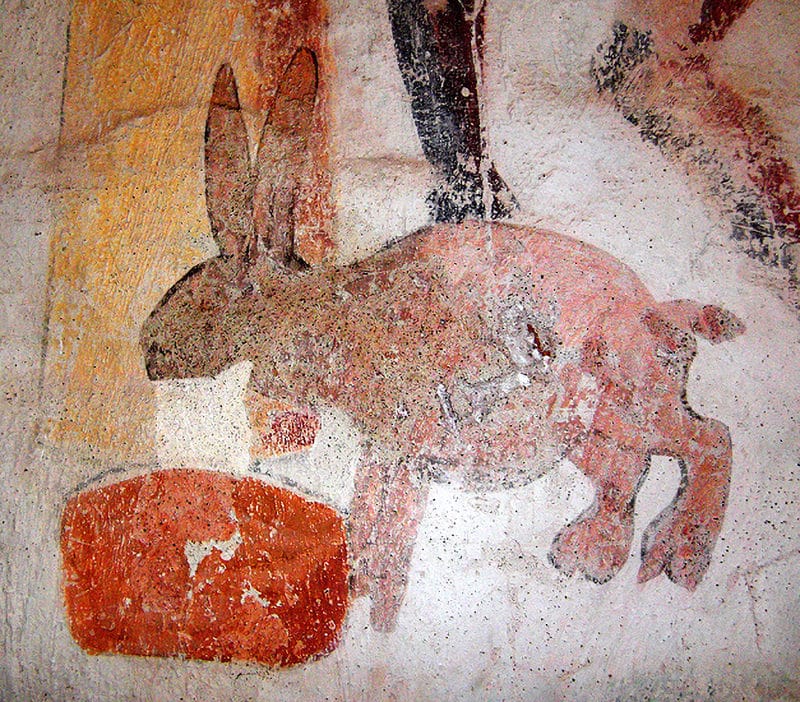
The image set also contains repetitions. One motif that recurs in several churches is the wheel of life, which depicts a man struggling upwards towards the proud pinnacle of life, only to plummet downwards, old and weak, towards the awaiting death. In his hand, Death carries a shovel, indicating that he is ready to dig the man's grave. Judgement Day, when the dead rise from their graves, is another recurring theme, portrayed with fervour. One version even depicts a man scraping dirt out of one ear as he leaves the cemetery.
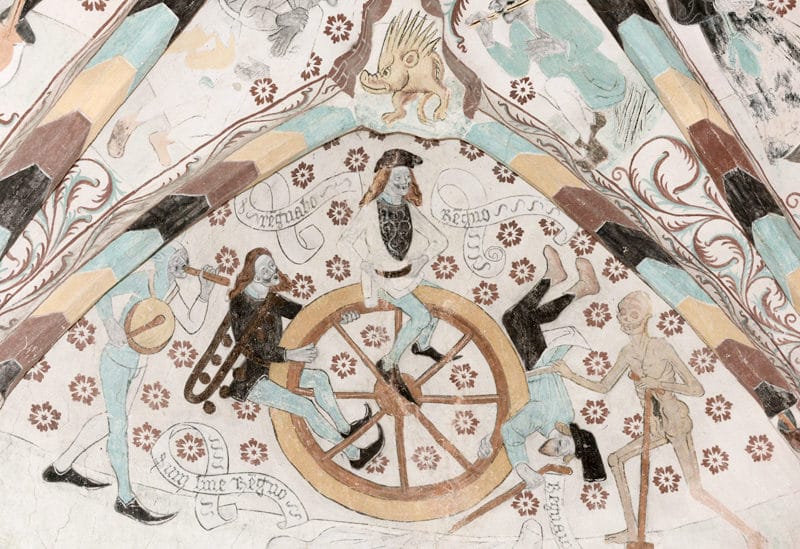
In the Middle Ages, when few people were literate and sermons were preached in Latin, images must have been very important to churchgoers. In an otherwise image-poor world, it must have been a powerful experience to enter the churches that Pictor decorated. What value Pictor's paintings had for the people of the time and how they were viewed we may not even understand. But even today we can be overwhelmed by his soulful narrative and dramatic scenes. The paintings are now half a millennium old, but continue to fascinate and bring new messages to modern man.
In Lids Church in Nyköping, Pictor has left a signature in the form of a self-portrait. The picture is heavily worn, but it is still possible to make out a proper man in a well-cut coat, trousers and snaffle shoes, all in keeping with the fashion of the time. His face is framed by a thick head of hair and above his head is a loop with the words 'Remember me, Albertus, painter of this church' in Latin. It's an extravagant 15th-century selfie, although the artist humbles himself by kneeling in a prayerful position.
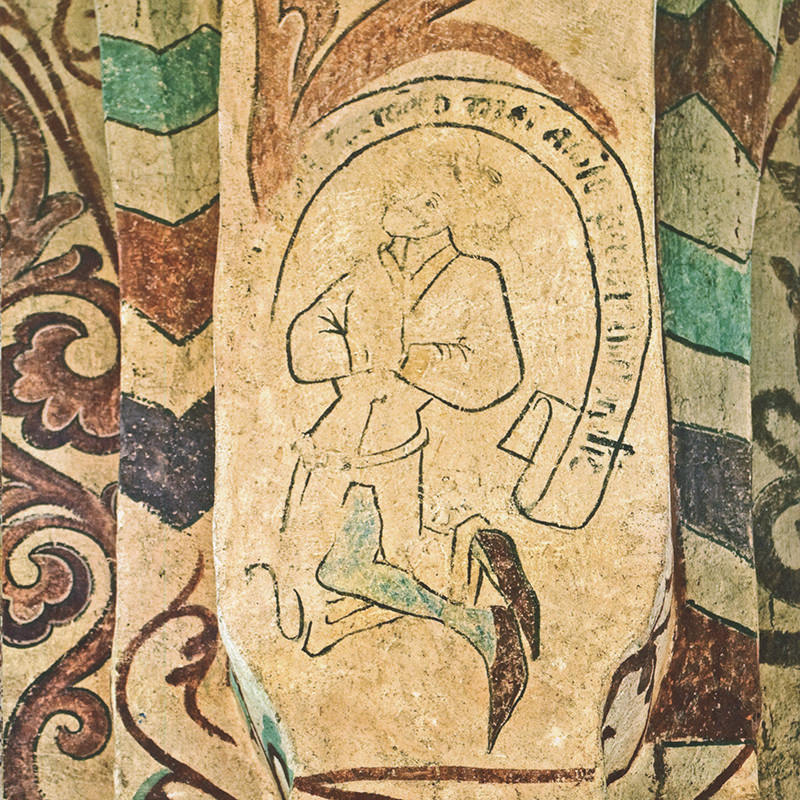
With today's perspective on his life's work, we can probably say that Pictor deserves admiration. In total, he has left behind hundreds of square metres of painted surfaces, which contain a magnificent treasure trove of images. Few, if any, would better deserve to be regarded as Sweden's greatest medieval artist, and his plea to be remembered is worth continuing to hear.
Footnote: There are currently 36 churches with paintings attributed to Albertus Pictor. However, the condition varies. His art is best experienced in the six churches where the pictures have never been painted over: Härkeberga, Härnevi, Odensala, Täby, Floda and Kumla kyrkby.
Read more:
https://historiesajten.se/visainfo.asp?id=635
https://popularhistoria.se/kultur/konst/konstnarer/medeltida-mastaren-albertus-pictor
https://sok.riksarkivet.se/sbl/Presentation.aspx?id=5647
http://christermalmberg.se/pictor/index.php
Subscribe to YouTube:
If you appreciate Allmogens independent work to portray our fine Swedish history and Nordic culture, you are welcome to buy something nice in the shop or support us with a voluntary donation. Thank you in advance!
Support Allmogens via Swish: 123 258 97 29
Support Allmogens by becoming a member
Support Allmogens in your will
